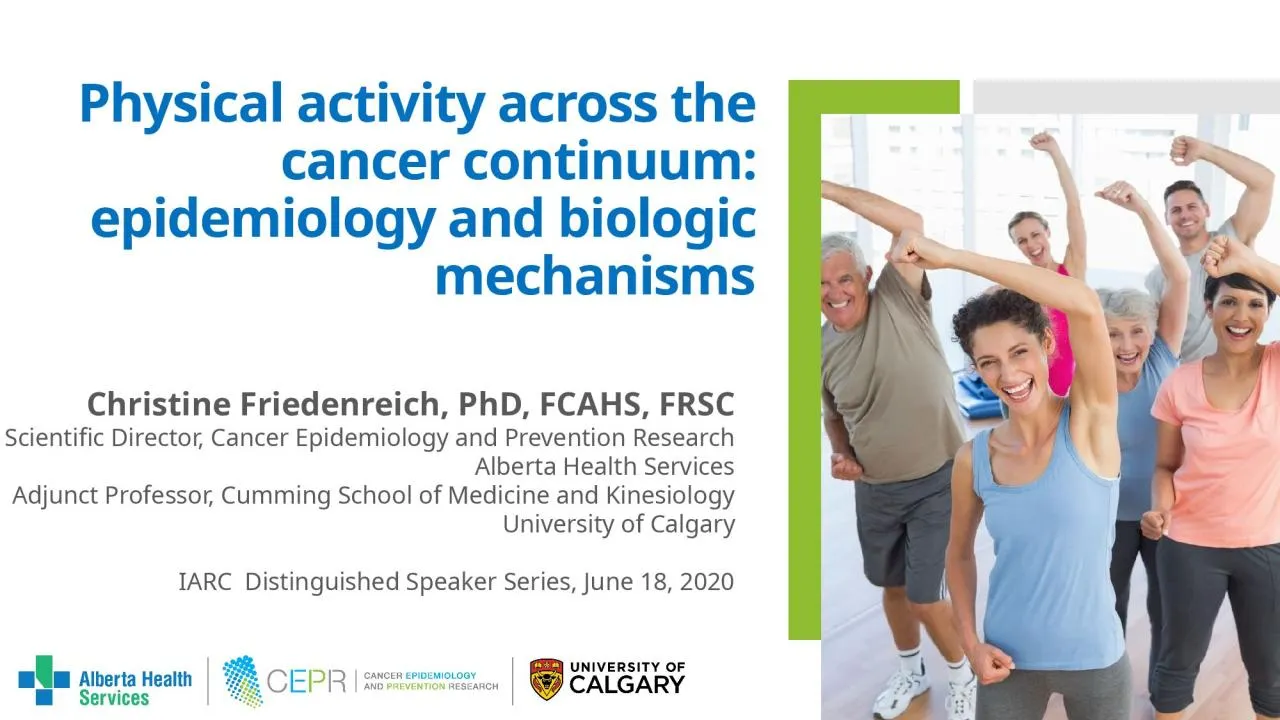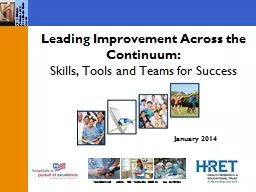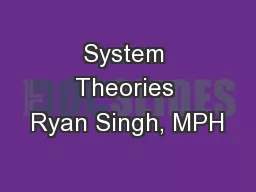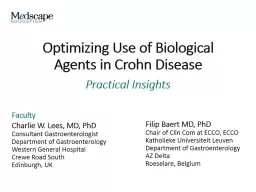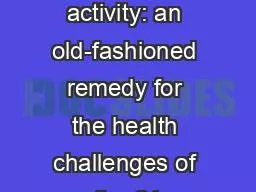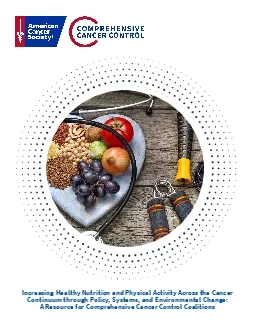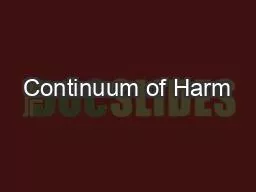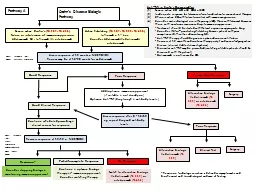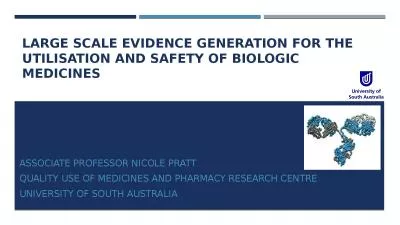PPT-Physical activity across the cancer continuum: epidemiology and biologic mechanisms
Author : osullivan | Published Date : 2022-06-01
Christine Friedenreich PhD FCAHS FRSC Scientific Director Cancer Epidemiology and Prevention Research Alberta Health Services Adjunct Professor Cumming School
Presentation Embed Code
Download Presentation
Download Presentation The PPT/PDF document "Physical activity across the cancer cont..." is the property of its rightful owner. Permission is granted to download and print the materials on this website for personal, non-commercial use only, and to display it on your personal computer provided you do not modify the materials and that you retain all copyright notices contained in the materials. By downloading content from our website, you accept the terms of this agreement.
Physical activity across the cancer continuum: epidemiology and biologic mechanisms: Transcript
Download Rules Of Document
"Physical activity across the cancer continuum: epidemiology and biologic mechanisms"The content belongs to its owner. You may download and print it for personal use, without modification, and keep all copyright notices. By downloading, you agree to these terms.
Related Documents

